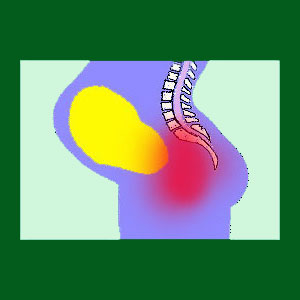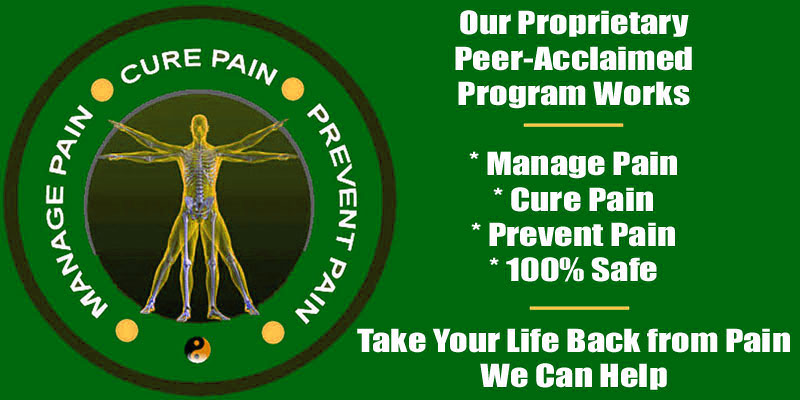
Spondylolisthesis and pregnancy can influence each other in negative ways. Pregnancy can contribute to the development of spondylolisthesis, as well as escalate existing symptoms. However, women who know that they demonstrate spondylolisthesis in the lower back can take special precautions when they are with child in order to minimize their chances of suffering painful consequences from the pregnancy.
Pregnancy is often a tumultuous time in life. Women must cope with many chemical changes in the body, as well as a variety of anatomical structural changes leading up to the baby’s birth. Women with a history of any type of lower back pain are often frightened by the very prospect of pregnancy, but we can assure you that having a safe and rewarding time carrying a child is certainly possible, despite being affected by listhesis or any lumbar dorsalgia condition.
This patient guide provides guidance for women who are pregnant, or thinking of becoming pregnant, and have concerns over the possible development or aggravation of a vertebral slippage condition in the lower back.
Spondylolisthesis and Pregnancy Causation
Pregnancy can be a direct contributor to the development of listhesis in the lumbar spine. Many women are born with congenital defects that dispose them to develop listhesis as they age and experience spinal degeneration. Usually, this defect exists as a weak section of the pars interarticularis that is prone to fracture when stressed. However, facet joint, vertebral shape and ligamentous defects are also possible contributors. All of these factors can also be developed when not congenitally present, through injury, surgery or abnormally early lumbar deterioration.
The asymmetry of a pregnant anatomy places an inordinate strain on the lumbar spine in the last trimester. The belly is distended and protrudes forward, pulling the lower back along with it. While the postural muscles of the lumbar region are amazingly strong and become even more so during pregnancy, the strain of this pull might cause anterolisthesis in women with some defect that allows the L4 or L5 vertebral bone to slip forward.
Depending on the extent of slippage, the woman may or may not suffer symptomatic activity in relation to the vertebral migration. Many women develop mild to moderate listhesis and never even know until much later in life, long after their pregnancy. They never experience pain, as their conditions remain minor and self-limiting in terms of progression. Other women suffer immediate symptomatic activity that ranges from inconsequential to debilitating, depending on the case-specific factors of the vertebral slippage.
Spondylolisthesis and Pregnancy Escalation
Women who already know they have spondylolisthesis are often fearful of carrying a child, since they have likely been warned by their doctor that the pregnancy might exacerbate their spinal issue. When L4 or L5 is affected by spondylolisthesis, pregnancy can certainly aggravate the condition by the same mechanism as detailed in the section above.
The abdomen pulls on the lumbar spine, drawing the vertebral column anteriorly, as the postural muscles resist and maintain spinal balance and stability. This continuous battle for balance in the lumbar spine can result in the listhesis condition being drawn forwards, increasing its progression to potentially symptomatic degrees. Please note that this model is based on the most common type of lumbar anterolisthesis, while retrolisthesis might behave completely differently and may not be affected at all by pregnancy, although it certainly may.
Symptoms might commence for the first time during pregnancy or might worsen if pain was already present prior to becoming pregnant. The degree of escalation depends greatly on the specifics of the patient’s listhesis issue, but can become severe in a short time frame if the vertebral bone progresses to a grade 3 or 4 classification, possibly necessitating treatment.
Spondylolisthesis and Pregnancy Guidance
Becoming pregnant is the first step in the miracle of life. There is no more rewarding experience for many women than the time spent with their child, both before and after birth. While the body goes through many uncomfortable changes, most women cite these factors as inconsequential in the grand scheme of life, once their child is born. However, when spondylolisthesis is a result of pregnancy, the consequences can persist for a very long time and may require invasive medical intervention to correct.
We always suggest that all women, with or without listhesis, make every effort to learn how to stay healthy during their pregnancy. Learning correct ergonomics of movement and posture will assist women in reducing the chances for negative dorsalgia conditions. Regular exercise throughout pregnancy is also highly beneficial. Women who are aware of listhesis in their lumbar spine should be sure to discuss the specific risk with their neurologist or orthopedist prior to getting pregnant.
On a very positive note, we have seen some dire escalation of progression and symptomatic activity associated with severe cases of lumbar spondylolisthesis organically regress back to less clinically significant levels following the birth of the child. Once the forward pressure is removed, some listhesis issues will once again improve, although not all will revert completely back to the same state as before the pregnancy. For women who continue to suffer serious effects of postpartum listhesis pain, medical care is both indicated and advised.
Spondylolisthesis > Consequences of Spondylolisthesis > Spondylolisthesis and Pregnancy



